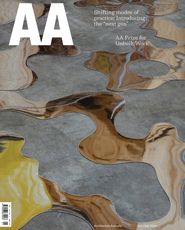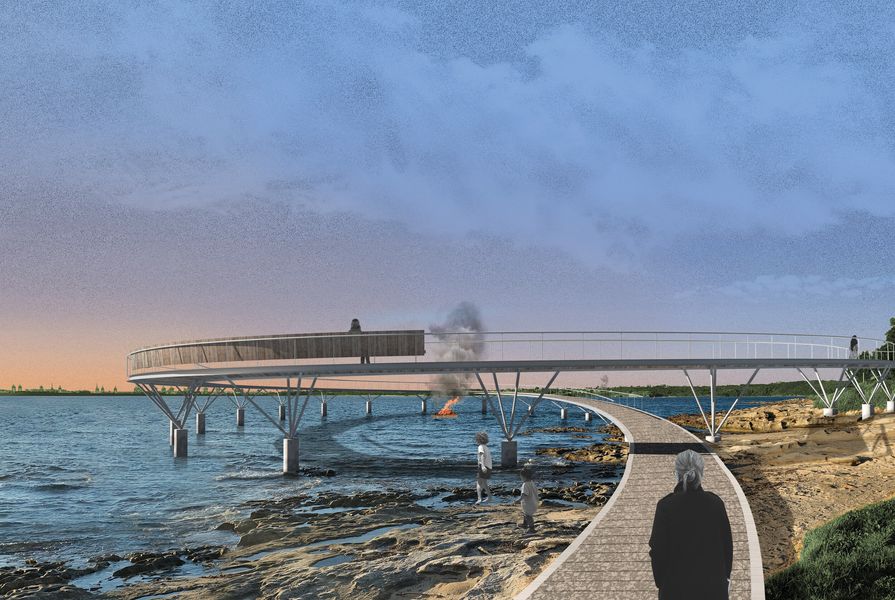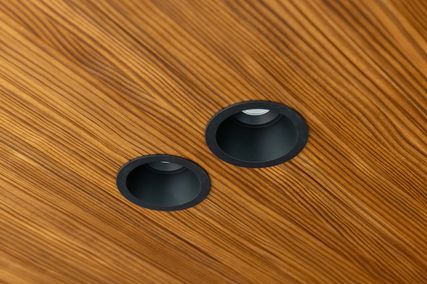If you decide to embark on starting your own practice and would like to work on public projects, there are many pathways. I don’t believe that any singular one is better than another. In fact, a combination of many paths will help set you in the right direction on what is inevitably a long – but satisfying – road. Here are my suggestions and personal reflections, 10 years after setting up my own collaborative practice.
-
Suggestion 1: Examine public projects you admire
Undertake research projects for university or architecture exhibitions, or engage in self-directed research. Write about building typologies that interest you. Visit projects locally, nationally and overseas if you can; seek to understand the challenges that the architects may have encountered during design, documentation and construction or since completion. Knowledge of other projects can help you navigate some potential challenges of delivering public work and set up a mental library you can refer to in your professional work. Architecture is a collective practice, and the more we draw on the experiences of others, the better the outcomes will be for everyone.
-
Suggestion 2: Gain experience working for others
During your studies and after graduation, take note of practices you see doing great public work. Visit it, if you can. The reality of projects – beyond the images – is important to understand. Seek to gain experience at a practice whose work you admire. It may take some time to get a position in one of your ideal practices, especially if the practice is small. But persevere, and gain related experience wherever you can. There are so many facets to public work – understanding how public clients work and who stakeholders are, managing communications with a large team of subconsultants, undertaking administration and documentation, working on site during construction and communicating effectively with builders – that every bit of experience helps.
-
Suggestion 3: Build strong relationships
Projects, especially those in the public realm, can often take a very long time. A lot of important life events can take place between the time that you start a project and its completion. Sharing so much of your everyday life with your colleagues over this period can forge strong personal and professional bonds. The relationships you build with people in your professional life – and the feelings of trust you develop – are important. Putting effort into these relationships from the start will likely pay you dividends well into the future.
-
Suggestion 4: Enter competitions
Getting a foot in the door can be hard, but you need to start somewhere. Competitions can be that first step, allowing you to test out ideas and collaborative relationships. They will enable you to start building a profile by demonstrating your approach to this type of work. But be careful to balance competition work with sufficient paid work to sustain your practice. Some competitions are becoming better paid, but most occur in multiple stages, and the remuneration rarely covers the full amount of work required.
Reflection: Perseverance and practice
Working on public projects can be difficult, but these projects – those involving work that benefits public life and holds intrinsic cultural value – have long been our passion at Aileen Sage. When we started the practice, we agreed that we did not want to be pigeonholed into private residential or interiors projects. This is where small practices often have to start, but it was important to us not to stay there too long. We’ve entered a lot of competitions over the years as a way in to public work.
We’ve always believed that lost competitions are never a waste of time – we’ve learnt so much from testing out our ideas and collaborating with a wide range of people. Competitions have also pushed us to keep putting ourselves out there as designers with something we wanted to contribute to the public domain. But be aware that the success rate for converting competition work into actual projects is very low. And even if you’re lucky enough to win, the project may never go ahead, or it may be more of a profile-building project than a profitable one.
There’s a fine balance to be struck: engaging in competition work shouldn’t mean running your practice (or yourself) into the ground. It’s also important to be aware of the toll that your work can take on your family life, and to keep your work in perspective within the bigger life picture.
Prior to setting up our own practice, Amelia and I worked together for several years at Neeson Murcutt Architects (now Neeson Murcutt Neille). Rachel Neeson has been a mentor, friend, supporter and role model to us both and helped to shape our shared attitude to life. When facing one of the many setbacks inevitable in professional and personal life, we try to give ourselves the time and space required to work through it, then pick ourselves up and keep on going. Admittedly, this is easier when there are two of you to help each other through the hard times.
-
Suggestion 5: Collaborate
Good personal experience on public projects is one thing, but building that experience as a new practice is another. Take up opportunities to collaborate with practices that have experience delivering projects of this type and scale. Good collaborations rely on mutual respect, admiration and trust – and these things take time to build.
-
Suggestion 6: Know what you don’t know
Recognizing the limits of your experience is important for those in every profession, including ours. Knowing what you don’t know, or the risks you can’t take on your own, is a strength. This does not mean you should hold back from putting forward your thoughts and challenging others. But ensure that you are also being self-critical, open-minded, and respectful of the experiences and knowledge of others. An equal dialogue, with open and honest conversations, can produce great outcomes.
Reflection: Communal endeavour
The sense of value and achievement that public projects can bring to the broader community is clear to us in the projects to which we have contributed over the course of our professional lives so far. But they’re not easy. They can be uncertain, include difficult and complex client and stakeholder groups, extend over long periods and throw up all sorts of unexpected challenges. They need to be balanced with other work that can be flexible and fluid enough to fill gaps and bumps along the road. And they require a flexible and agile team.
Partnering with experienced practices has provided opportunities for our team to build knowledge on larger-scale projects, and to gain an understanding of many different types of project, sector and scale. Through these collaborations, we benefit from a wider and more generationally diverse network. At the same time, we can work on delivering our own smaller projects, which enable us to test design processes, construction and material ideas within shorter timeframes. These smaller projects keep our own team tight.
When collaborating with others, it’s important not to be too precious, but also not to be too compromising. Sometimes, the bigger picture is more important than the superficial details. But know the limits of your influence, and be proud of the impact and contributions you make. Each small project contributes in some way to a larger one. Good work takes time and is worth the investment. Avoid having preconceived ideas of what a project will be when you begin; just start the conversation and see where it takes you. It’s about the journey, not the end point. Build relationships, build trust, and don’t be afraid to learn from and lean on others.
Source

Discussion
Published online: 23 Jan 2024
Words:
Isabelle Toland
Images:
Aileen Sage Architects, Bangawarra, Djinjama and Event Engineering,
Brett Boardman
Issue
Architecture Australia, January 2024

















